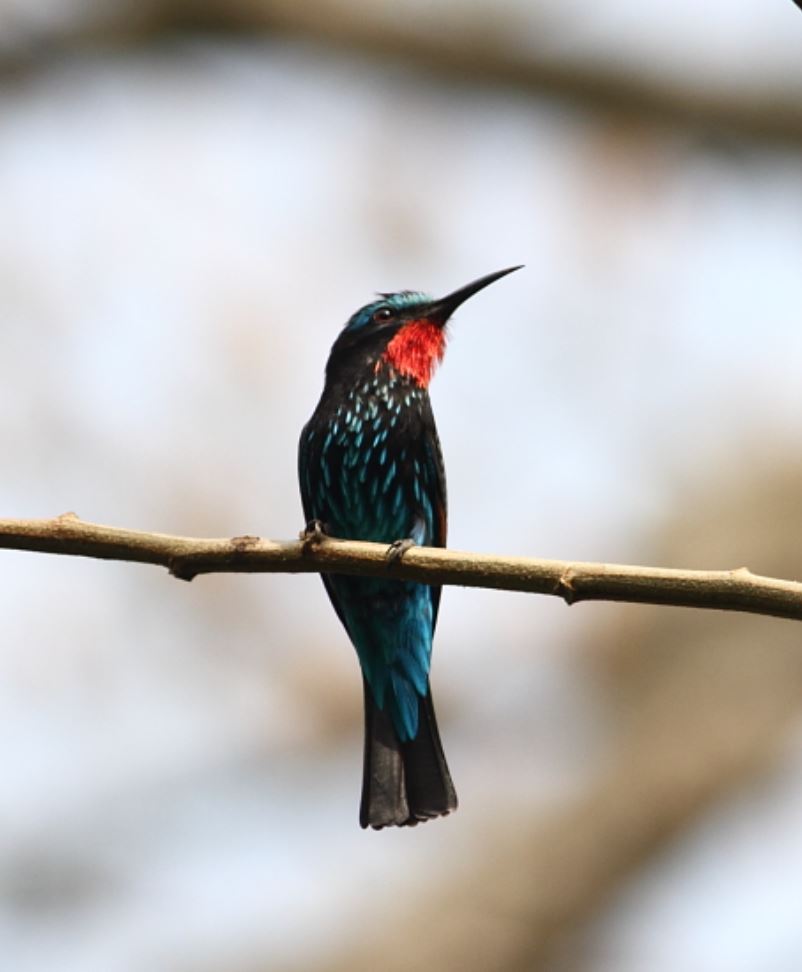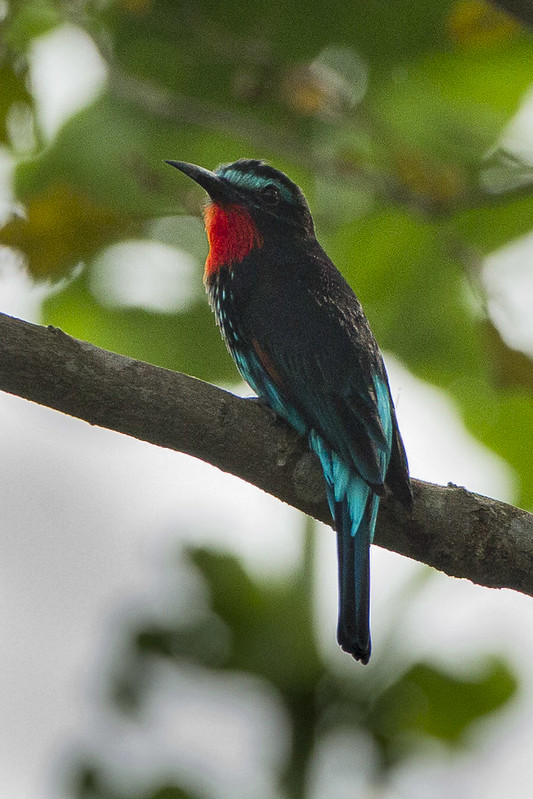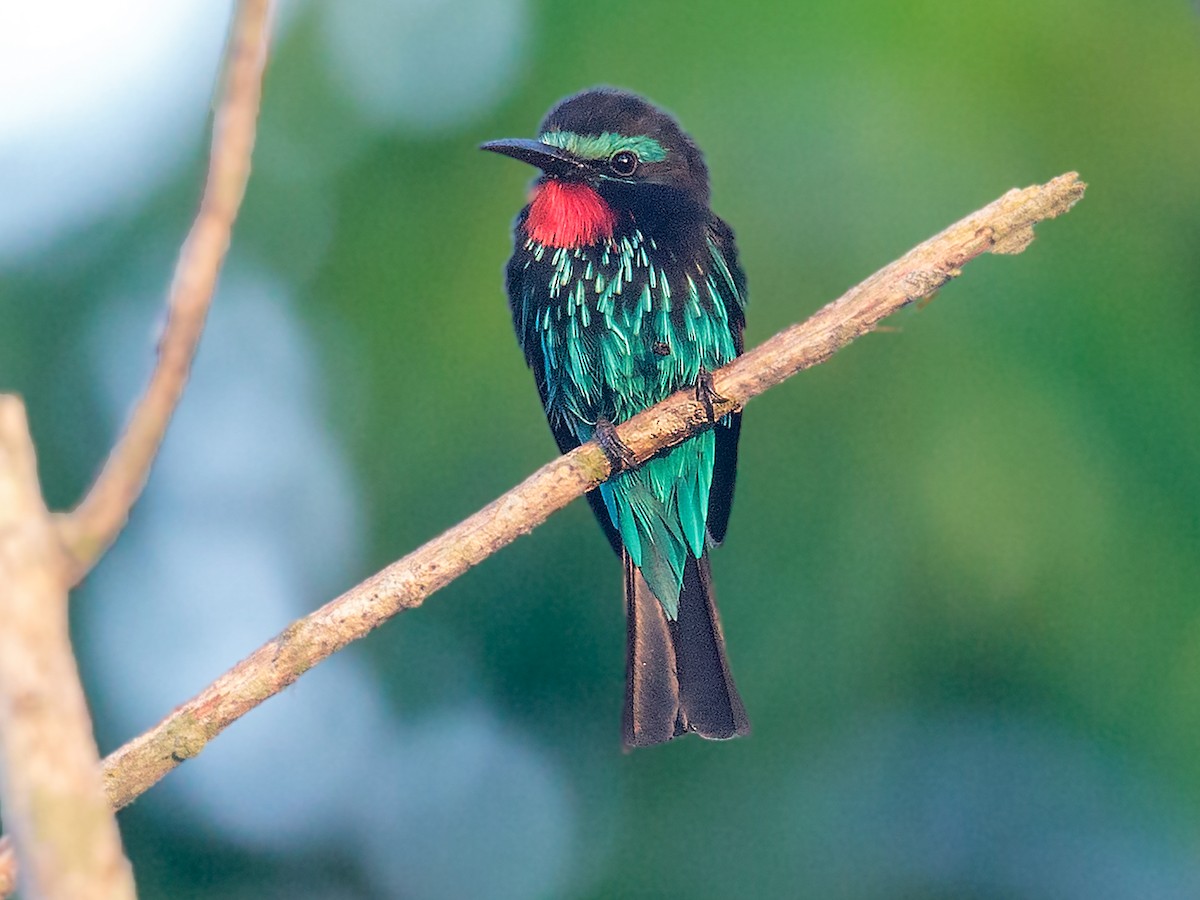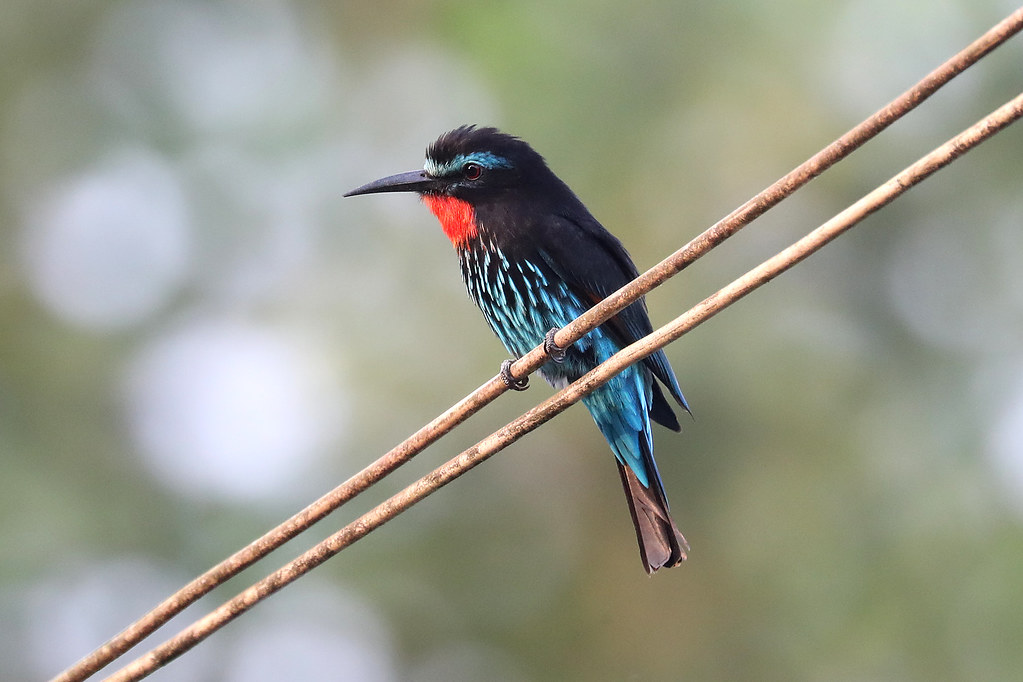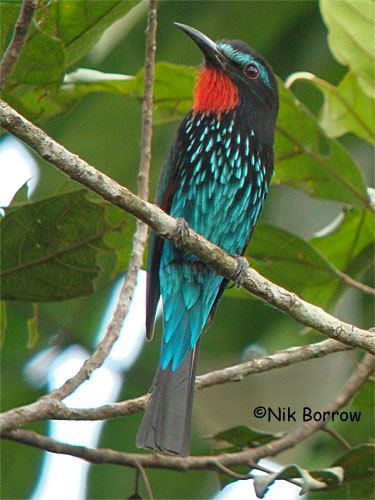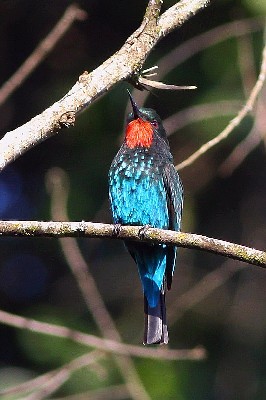Good light shows off this bird’s electric blue belly and bright red throat impressively.
Meet the black bee-eater
Bram ter Keurs at observed.org, a global biodiversity recording project. (cropped) is licensed under CC BY 3.0.
The black bee-eater (Merops gularis) is a bird that grows to about 20 cm (20 in) long. It is a predominantly black bird, with a scarlet chin and throat, with a chest and belly heavily marbled with turquoise/blue flecks. It has pale blue eyebrows, tail coverts and rump.
Photo courtesy of Francesco Veronesi/CC BY-SA 2.0
Males and females appear almost identical.
Outside of the breeding season, these birds appear greener.
This species can be found throughout sub-Saharan Africa.
Throughout its range, this bird prefers to inhabit intratropical rainforests.
As their name suggests, black bee-eaters feed on flying insects.
There are few details available about the nesting habits of this bird. However, most bee-eaters are known to be gregarious. They form colonies and nest in burrows excavated in vertical sandbanks, often on the banks of a river or on flat land. As they live mainly in colonies, a large number of nests can be seen together. The eggs are white and there are usually five in the clutch.
The black bee-eater has a wide distribution and although the population size has not been quantified, it is said to be widespread and common with a large total population. The International Union for Conservation of Nature has assessed its conservation status as “least concern.”
Watch this bird right here in the video below:
